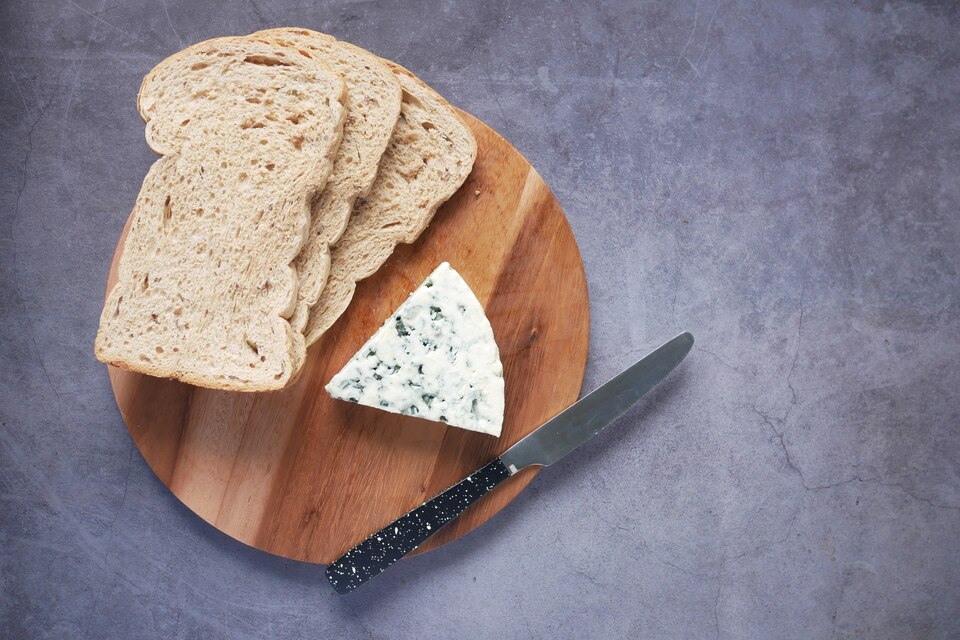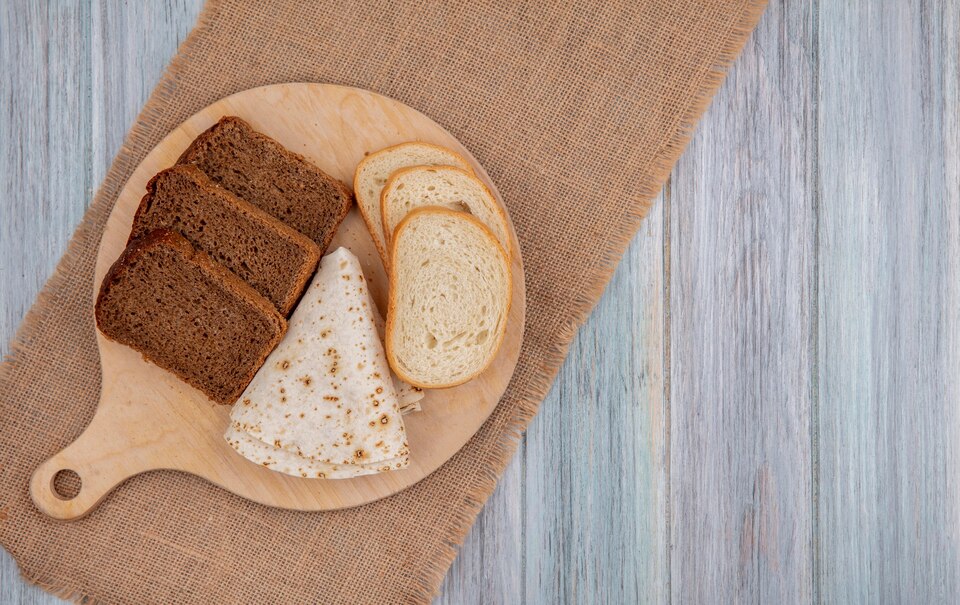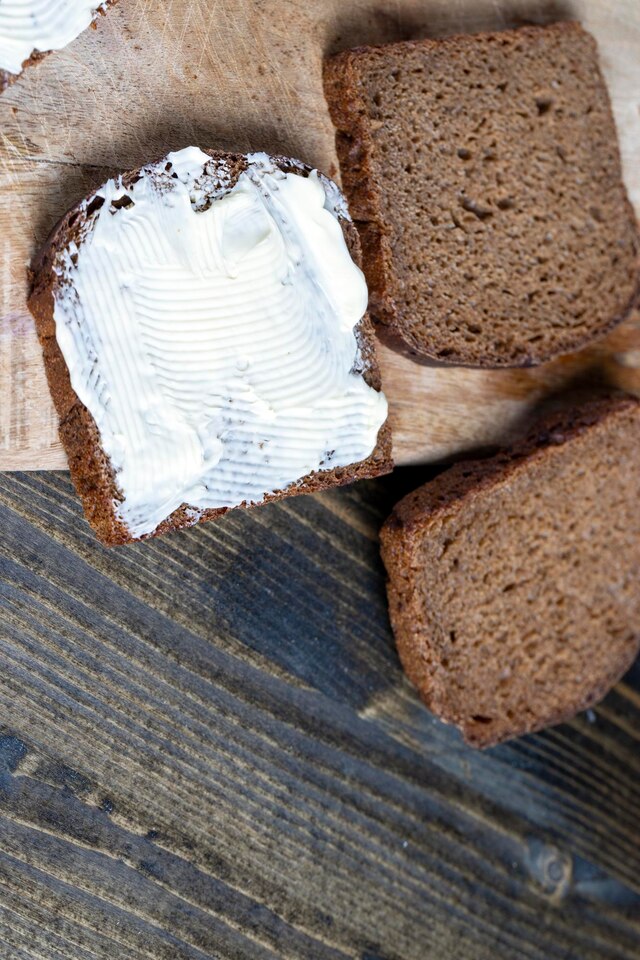Embarking on the journey of sourdough baking introduces a world brimming with culinary possibilities, particularly the aspect of utilizing the starter’s byproduct. A prevalent inquiry among baking aficionados is, “Is eating sourdough discard healthy?” This article aims to meticulously explore the various ways this often-discarded ingredient can play a beneficial role in our health and culinary repertoire.
Understanding Sourdough Discard
Entering the realm of sourdough baking brings to light intriguing questions, notably, “Is eating sourdough discard healthy?” Let’s uncover the essence of this byproduct and its potential beyond the kitchen waste bin.
What Exactly Is Sourdough Discard ?
The inquiry, “Is eating sourdough discard healthy?“, compels us to look closely at what sourdough discard truly is. It’s the portion of the sourdough starter that’s removed before the addition of fresh flour and water during the feeding process. Rather than dismissing this byproduct as waste, discerning bakers recognize it as an opportunity to infuse recipes with a unique tang and richness.
The Surprising Benefits of This Baking Byproduct
When contemplating whether “Is eating sourdough discard healthy?“, it’s vital to consider its nutritional profile. Sourdough discard, derived from the fermentation process, contains beneficial bacteria that contribute to gut health and improved digestion. This aspect is particularly appealing for those looking to enhance their dietary habits with fermented foods.
The question of “Is eating sourdough discard healthy?” encourages a deep dive into the discard’s health implications. As a fermented product, it shares many of the nutritional benefits of the starter, including a slight reduction in gluten content and an increase in bioavailable nutrients, making it a subject of interest for nutrition-conscious individuals.
Health Aspects of Sourdough Discard
Investigating the query, “Is eating sourdough discard healthy?“, it’s essential to delve into the nutritional and health benefits provided by sourdough discard. This byproduct of sourdough starter offers unique advantages, thanks to its fermentation process.
Nutritional Breakdown: What’s Inside?
In addressing “Is eating sourdough discard healthy?“, we explore the nutritional value that sourdough discard brings to the table. Rich in essential vitamins and minerals, including B vitamins and minerals such as iron and selenium, sourdough discard contributes positively to our dietary needs. The fermentation process also fosters the growth of probiotics, which are beneficial for gut health, indicating a positive response to “Is eating sourdough discard healthy?”
The Fermentation Factor: Gut Health and Beyond
The question, “Is eating sourdough discard healthy?“, further leads us to examine the benefits of the fermentation process inherent in sourdough discard. Fermentation not only enhances the flavor profile but also improves the digestibility of grains, making nutrients more accessible and reducing potential antinutrients. The lactic acid bacteria present in sourdough discard can aid in digestion and offer a slight probiotic effect, supporting the notion that indeed, eating sourdough discard can be beneficial for health.
The inquiry “Is eating sourdough discard healthy?” sheds light on how the discard, through its fermentation, may positively impact blood sugar levels by moderating the glycemic index of foods. This nuanced understanding suggests that incorporating sourdough discard into one’s diet, especially for individuals monitoring blood sugar, can offer healthful advantages.
Conclusively, exploring whether “Is eating sourdough discard healthy?” reveals that its inclusion in the diet, particularly due to its fermentation process and nutritional content, aligns with health-conscious eating. The probiotic qualities and nutrient availability contribute to why incorporating sourdough discard into meals is not just a culinary trend but a healthful practice.
Incorporating Sourdough Discard in Your Diet
The question, “Is eating sourdough discard healthy?”, prompts us to look at practical ways to include this ingredient in our meals thoughtfully. Sourdough discard, known for its unique tang and nutritional properties, can be a versatile addition to both everyday and special occasion recipes.
Incorporating Sourdough Discard into Meals
In answering “Is eating sourdough discard healthy?”, let’s explore how to integrate it seamlessly into various dishes:
- Breakfast Innovations: Enrich your morning routine by adding sourdough discard to pancake or waffle batter, introducing a delightful tang and making breakfasts more nutritious and interesting. For more breakfast inspiration, check out sourdough discard recipes from breakfast to dessert.
- Creative Savory Uses: Enhance your savory dishes, such as homemade pizza dough or flatbreads, with sourdough discard. Its unique flavor complements a wide range of toppings and fillings, offering a gourmet twist to your meals.
- Sweet Surprises: For those with a sweet tooth, incorporating sourdough discard into cakes, muffins, or even cookies adds complexity to the flavors, balancing sweetness with its inherent sourness.
These culinary applications demonstrate the versatility of sourdough discard, affirming that eating it can indeed be both healthy and delicious.
From Breakfast to Dinner: Versatile Uses
As we address “Is eating sourdough discard healthy?”, it’s important to consider those with gluten sensitivity or celiac disease. While sourdough fermentation may reduce gluten content to some extent, making it more digestible for some, it’s crucial to remember:
- Not Suitable for Celiac Disease: Sourdough discard contains gluten, making it unsuitable for individuals with celiac disease or severe gluten intolerances.
- Mindful Consumption: For those with mild gluten sensitivities, it might be worth experimenting with sourdough discard in small quantities, observing how your body responds. However, always prioritize health and consult with healthcare professionals if unsure. For insights into managing gluten sensitivity with sourdough discard, consider reading Zero-Waste Chef’s guide on managing your jar of sourdough discard.
Incorporating sourdough discard into your diet offers an opportunity to enjoy a wider array of fermented foods, contributing positively to gut health and overall wellness. As we continue to explore the benefits and versatile uses of sourdough discard, remember to tailor its incorporation to fit your dietary needs and preferences, ensuring that the answer to “Is eating sourdough discard healthy?” remains a resounding yes for you.
Recipe Categories with Sourdough Discard
Sourdough discard isn’t just a byproduct; it’s a versatile ingredient that can breathe life into various recipes, from quick snacks to elaborate meals. Let’s delve into how sourdough discard can be utilized across different recipe categories, enhancing flavor profiles and adding nutritional value.
Unfermented vs. Fermented Flour Recipes
When pondering “Is eating sourdough discard healthy?”, it’s beneficial to understand the distinction between using sourdough discard in unfermented and fermented recipes:
- Unfermented Recipes: Quick breads, pancakes, and crackers made with sourdough discard don’t rely on the discard for leavening but rather for their distinct sourdough flavor. These are perfect for bakers looking to use their discard immediately.
- Fermented Recipes: For those seeking the added benefits of fermentation, incorporating sourdough discard into recipes that ferment overnight or longer, such as certain breads and doughs, can enhance both texture and taste. This process can also potentially make these foods more digestible and nutritious.
Examples of Sourdough Discard Recipes
Diving into specific examples can help illustrate the culinary versatility of sourdough discard and answer “Is eating sourdough discard healthy?” with delicious evidence:
- Sourdough Discard Crackers: A simple, savory snack that can be customized with various herbs and spices. They’re perfect for using up discard and offer a healthier alternative to store-bought snacks.
- Sourdough Discard Muffins: Ideal for breakfast or as a sweet treat, these muffins benefit from the subtle tang of sourdough discard, pairing wonderfully with fruits and nuts.
- Long-Fermented Sourdough Bread: Utilizing sourdough discard in a long-fermented bread recipe not only contributes to depth of flavor but also to the bread’s nutritional profile, showcasing the health benefits of slower fermentation processes.
Expanding Culinary Horizons with Sourdough Discard
In a world increasingly aware of the importance of sustainability and reducing food waste, sourdough discard stands out as a symbol of mindful cooking and baking. Let’s explore how incorporating this byproduct into our diets not only benefits our health and palates but also aligns with eco-friendly practices.
Minimizing Kitchen Waste
One of the most compelling reasons to use sourdough discard is its contribution to minimizing kitchen waste. Every time we find a new use for sourdough discard, we’re taking a small but significant step towards a more sustainable lifestyle. By transforming this byproduct into delicious meals and treats, we extend the life cycle of our food and reduce our environmental footprint.
Creative Culinary Experiments
Sourdough discard encourages culinary creativity, challenging us to think outside the traditional baking box. From savory pancakes and frittatas to sweet quick breads and cookies, the discard serves as a versatile base for experimentation. Each recipe is an opportunity to test new flavor combinations and techniques, making our meals more exciting and diverse.
Community Sharing and Learning
The culture of sharing sourdough starter and discard with friends, family, and community members fosters a sense of connection and collective learning. It’s an invitation to exchange recipes, tips, and experiences, strengthening bonds over shared meals and baking adventures. This communal aspect highlights the joy of baking not just as a solitary activity but as a communal one, bringing people together through the universal language of food.
Educational Opportunities
Utilizing sourdough discard also serves as an educational tool, especially for younger generations. It’s an excellent way to teach children about fermentation, the science of baking, and the importance of sustainability in everyday life. Cooking and baking with sourdough discard can inspire curiosity and a deeper appreciation for where our food comes from and how we can make responsible choices in the kitchen.
In conclusion, embracing sourdough discard in our cooking and baking routines transcends the simple act of preparing food. It embodies a commitment to sustainability, creativity, community, and education. As we continue to explore and share the myriad uses for sourdough discard, we contribute to a more mindful, connected, and delicious world. Let the journey with sourdough discard inspire you to make the most of every ingredient in your kitchen, one recipe at a time.
The Future of Sourdough Discard in Culinary Innovation
As we delve deeper into the versatile world of sourdough discard, it becomes clear that this byproduct is more than just an ingredient; it’s a catalyst for culinary innovation and a reflection of the evolving landscape of home cooking and professional gastronomy. Let’s ponder the future of sourdough discard and its potential to shape new trends in the culinary world.
Expanding Culinary Horizons
The exploration of sourdough discard has only just begun. Chefs and home cooks alike are continually finding novel ways to incorporate it into a wide array of cuisines and dishes, pushing the boundaries of traditional sourdough applications. As more people embrace the versatility of sourdough discard, we can expect to see it featured in an even broader spectrum of recipes, from gourmet restaurant menus to everyday home cooking.
Sustainability and Zero-Waste Cooking
The emphasis on sustainability in the culinary industry is growing, and sourdough discard perfectly aligns with the zero-waste cooking movement. Its use not only reduces food waste but also promotes a more thoughtful and responsible approach to ingredient utilization. As awareness and commitment to environmental sustainability increase, sourdough discard could become a staple in kitchens striving for minimal waste.
Health-Conscious Baking
With a growing focus on health and wellness, sourdough discard’s nutritional benefits, such as improved digestibility and potential probiotic properties, make it an attractive ingredient for health-conscious bakers. Future innovations may include developing recipes that maximize these health benefits while catering to dietary preferences and restrictions, such as gluten-free or low-GI diets.
Educational and Community Initiatives
The story of sourdough discard offers valuable lessons in food science, sustainability, and culinary creativity. There’s potential for educational programs, workshops, and community initiatives centered around sourdough baking, fermentation, and zero-waste cooking practices. By sharing knowledge and skills related to sourdough discard, we can foster a more informed, connected, and sustainable culinary community.
In conclusion, the journey with sourdough discard is an ongoing adventure, rich with possibilities for innovation, sustainability, health, and community building. As we look towards the future, it’s exciting to consider the myriad ways in which this humble byproduct will continue to inspire and transform our culinary landscapes. Whether you’re a professional chef or a home cooking enthusiast, embracing sourdough discard invites you to be part of a movement that values creativity, sustainability, and the joy of shared culinary experiences. Let’s continue to explore and celebrate the endless potential of sourdough discard, one delicious recipe at a time.
Before we address some commonly asked questions about sourdough discard, it’s worth highlighting the importance of integrating this versatile ingredient into our daily cooking and baking routines thoughtfully. Embracing sourdough discard not only champions a more sustainable approach to food waste but also enriches our diets with unique flavors and potential health benefits. The journey with sourdough discard, from a simple byproduct of sourdough maintenance to a star in various dishes, underscores the creativity and resourcefulness that sourdough baking brings into our kitchens. Whether you’re a seasoned baker or a curious newcomer, the exploration of sourdough discard opens up a myriad of possibilities that go beyond traditional bread making, inviting everyone to discover the joy and satisfaction of transforming what was once considered waste into culinary treasures. With each recipe, sourdough discard reminds us of the beauty in simplicity and the value of mindful cooking.
FAQs
As we wrap up our exploration of sourdough discard and its place in a healthy diet, let’s address some frequently asked questions that might arise along the way:
- Can I use sourdough discard straight from the fridge? Absolutely, sourdough discard can be used directly from the fridge, especially in recipes where it’s being cooked or baked.
- How long can I store sourdough discard before it goes bad? Sourdough discard can be stored in the refrigerator for up to a week, ensuring it remains fresh for immediate use. For longer storage, consider freezing it, where it can last for several months.
- Are there non-baking uses for sourdough discard? Yes, beyond baking, sourdough discard can be used in a variety of creative ways, including as a thickener for soups and sauces, in salad dressings, or even as a tangy marinade base.
In conclusion, the journey into the world of sourdough discard reveals not only a path towards more sustainable baking practices but also a world rich with culinary potential. Whether you’re incorporating it into quick breakfast recipes, experimenting with fermented doughs, or exploring its use in non-baking applications, sourdough discard proves to be a valuable ally in the kitchen. So, the next time you’re left with a jar of this tangy byproduct, remember its versatility and let your culinary creativity flourish.




1 thought on “Is Eating Sourdough Discard Healthy? Unveiling the Truth”